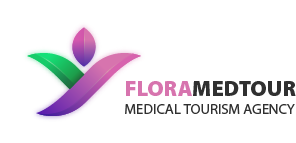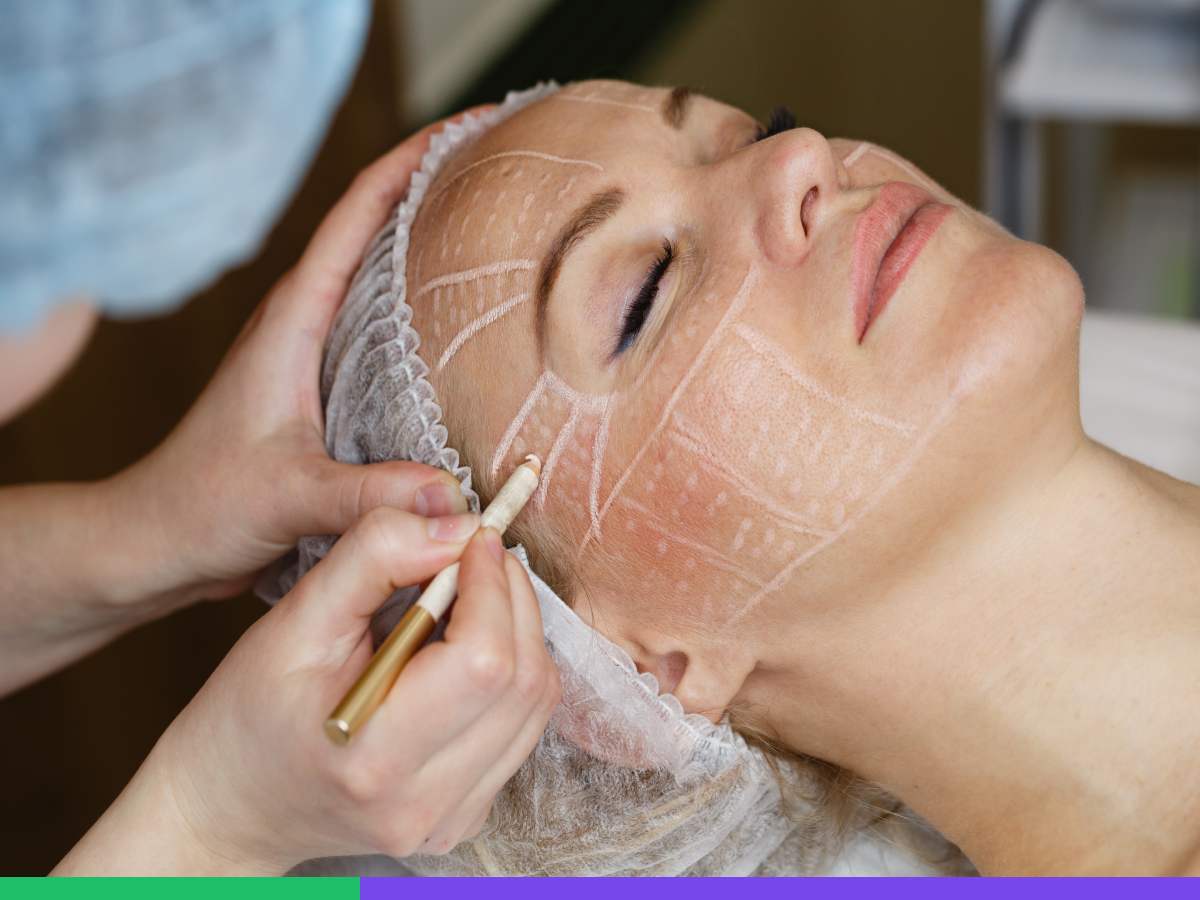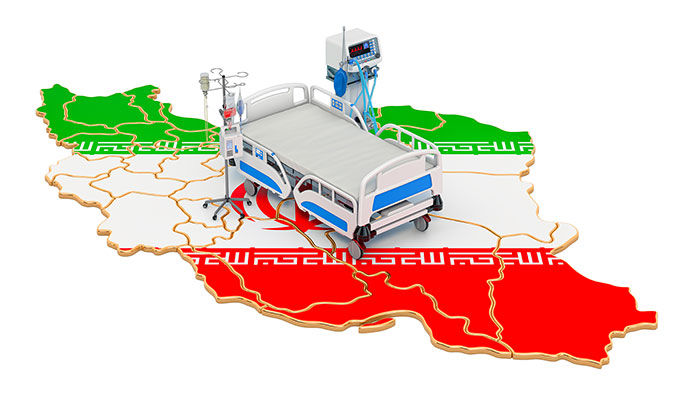Including these Services for Free
Medical tests
Rhytidectomy post-op care
Visa and Travel insurance
Interpreter
Food for all days
Medical consultation
Airport Pick up/Drop off
SIM card
Shopping
Sightseeing Tours
Medicine
Follow up
VIP Transfer
Internet

Flora medical tourism facilitator offers all-inclusive Head & Neck Surgery Packages all across Iran(Tehran, Mashhad, Kish island, Shiraz, Tabriz, Esfahan, Yazd, Ahvaz, Sari…), for any budget.
7 Night Accommodation in Iran




Flora medical tourism facilitator only has partnerships with the best hotels.
We will reserve accommodation for you at up to 40% lower price than anywhere else.
ALL INCLUSIVE HEAD & NECK SURGERY PACKAGE IN IRAN from $2,100
What is Head and Neck Surgery?
In many countries around the world, a Head and Neck surgery can cost an arm and a leg. Whether it’s for a tumor, cancer, or any other treatment, medical tourism can offer a great help to find great results for a real bargain. Here in Iran, Floramedtour can provide you with a full Head and Neck surgery package including all required services at a price starting from $2000.
Head and Neck Surgery Step by Step in Iran
1.Consultation for Head and Neck surgery
Head and Neck surgery is a procedure that addresses conditions associated with the neck and head, especially cancerous and non-cancerous tumors. Head and Neck surgery aims to treat malfunctioning of mouth, head, throat, glands and sinuses. It can also remove tissues and parts that might cause problems to head and neck functionality. During a head and neck surgery, the surgeon makes several incisions to remove problematic tissues, like a tumor or abnormality, from the target area. The following package can give you an overall view on Head and Neck Surgery and how it works.
2.The procedure for Head and Neck Surgery
The exact procedure for different types of Head and Neck could have some varieties. However, a Head and Neck surgery mainly starts with applying anesthesia. Then, the surgeon makes an incision at the site of treatment. Afterwards, the affected part must be fixed or removed. The affected tissue could be a tumor, lymph nodes, or blood clots inside veins. At last, the surgeon stiches the incisions together and seals them up.
3.Recovery for Head and Neck Surgery
After the Head and Neck surgery, you require some time to get back to the track. During your recovery, you must follow certain instructions including:
- Pain and soreness are natural during the first week
- The stiches will be removed in 7 days after the procedure
- You may feel numbness around the cut for a week
- You can start gentle exercise and walking after the first week
4.Follow-up for Head and Neck Surgery
The rest of your head or neck recovery will be at home. To ease the process, Floramedtour will provide you with 2 years of follow-up services. These services include giving your update information on head and neck recovery, answering your questions, and getting your recovery process under observation. Meanwhile, it is necessary the you follow the below general instructions:
- Get rest whenever you feel tired
- Start doing gentle activities from the first week
- You can normally get back to your work after 4 weeks
- Do not drink alcohol during the whole period of your recovery
- Smoking is not allowed for a minimum of 2 weeks following the surgery
- Consume enough fruits, vegetables, whole grains, and fish during your recovery
- Drink 8-12 glasses of non-caffeinated fluid per day to keep your body hydrated
- Avoid straining your neck for 4 to 6 weeks after a neck surgery
Why is Iran a good choice for Head and Neck Surgery?
Different countries offer different costs and service qualities for head and neck surgeries. If you are looking for an ideal medical destination, read the following reasons why Iran could be your best choice:
- Cheaper cost of procedures compared with the average world price
- Positive feedbacks from the patients who have had a successful Head and Neck surgery in Iran
- Providing a vast array of surgical and non-surgical treatment options
- Using advanced medical facilities and equipment
- Dedicated and skilled medical staff who are ready to help you anytime
- Treatment by specialized and board-certified surgeons
- Walking through tourism attractions and historical sites of the ancient land of Iran
How much does Head and Neck cost in Iran?
In choosing a medical destination, cost of surgery can be an important factor. The cost of Head and Neck is various across the world. The price also depends on the exact type of surgery. As an example, a tumor rescission surgery can cost up to $150,000 or more in US and up to £40,936 in UK. The average tumor resection cost is $52,083 around the world. Iran offers a far competitive price of $2000 with great treatment services. Iran is a place to get cheaper cost at better qualities. Floramedtour offers Head and Neck surgery packages, including all necessary services, with a price starting from $2000. The following provides a general comparison for several types of head and neck surgery prices in Iran and around the world:
| Type of Surgery | Average World Price | Price in US | Price in Iran |
|---|---|---|---|
| Brain tumor removal surgery | $6614 | Up to $150000 | $2000 |
| Endoscopic neck surgery | $6,000-$8,000 | Up to $20000 | $2000-$2400 |
| Facial Paralysis surgery (facial reanimation surgery) | $8571 for mid-level | Up to $26,000 | $4500 |
| Total laryngectomy | $29,563 | $10,915 up to $120,345 | $10000 |
| Voice restoration procedures | $14062 | Up to $70000 | $7000 |
| Neck dissection surgery | $5000 | $6000-$10000 | 2500$ |
| Thyroidectomy | $7850 | $27500 | $800-$3000 |
| Submandibular gland excision | $8306 | $8000-$11000 | $2225 |
Types of Head and Neck Surgery
There are several procedure types that come under the title head and neck surgery. The main types of surgical procedures for Head and Neck include:
Laryngeal and tracheal surgery
Laryngotracheal reconstruction surgery widens your windpipe (trachea) to help you breathe easier. The procedure involves inserting a small piece of cartilage into the narrowed section of the trachea to make it wider and open the way of air.
Endoscopic neck surgery
Endoscopic neck surgery is an advanced minimally invasive alternative to traditional neck surgery that involves a shorter recovery and less pain.
Free flap surgery
A Free flap surgery transfers of a patient’s own tissue from a one site to another site for treatment reasons. The receiver site is the site of a defect that needs treatment.
Skull base Surgery
Skull base surgery aims to provide exposure to the skull base in order to treat the area. This can help the surgeon remove both noncancerous and cancerous abnormalities at the base of the skull. The followings are the main types of skull surgery:
- Anterior skull base surgery
- Posterior skull base
- Middle skull base surgery
- Endoscopic Skull base surgery
Facial Paralysis surgery (facial reanimation surgery)
Facial reanimation is a surgical procedure to correct facial paralysis, which is caused by the nerve cells in the face. The paralysis may be either congenital or be caused due to a trauma or disease. Compared with Botox, Facial reanimation can provide more effective and long-lasting results.
Total laryngectomy
Total laryngectomy removes the whole larynx. If needed, the surgeon might also take out your pharynx. The Larynx is part of your respiratory system located inside the middle of your neck. And pharynx is tube that starts from behind your nose and ends at the top of esophagus.
Pharyngolaryngectomy
The procedure to remove both the larynx (voice box) and the pharynx is called Pharyngolaryngectomy.
Uvulopalatopharyngoplasty (UPPP)
Uvulopalatopharyngoplasty (UPPP) is surgery to open the upper airways by taking out extra tissue in the throat. It may be done alone to treat snoring or in combination with other procedures to treat moderate obstructive sleep apnea (OSA).
Dohlman’s procedure
The standard endoscopic technique, known as Dohlman’s procedure, uses electrocautery or lasers to divide the wall between the pouch and the oesophagus. This procedure is an effective alternative to external diverticulectomy in the treatment of pharyngeal pouch. This technique is also bloodless and comes with a quicker recovery.
Various neck flaps
Neck flaps surgery refers to replacing small areas of soft tissue by using nearby healthy tissue, called a flap. Since flaps usually have their own blood supply they heal quickly. The flaps may be taken from different body parts such as scalp, cheek, forehead, neck, or chest.
Voice restoration procedures
Surgical procedures for voice restoration help patients who are unable to effectively use esophageal speech. Depending on the patient, these may involve phonomicrosurgery (treating vocal cords), laryngoplasty; laryngeal injections; and surgical laryngeal reinnervation. The procedures can help improve voice production and therefore can lead into a better oral communication.
Thyroplasty
Thyroplasty refers to a procedure where the position of the vocal cord is altered to improve the patient’s voice and ability to cough. This surgery starts by an incision in the neck and making small hole in the voice box. Then, the surgeon places an implant to move the vocal cord into the proper position.
Tracheostomy
A tracheostomy procedure involves opening the front of the neck so a tube can be inserted into the windpipe (trachea) to help you breathe. The air can pass through this tube into the longs to help you breathe easier. If needed, the tube can be combined with an oxygen supply and a breathing machine called a ventilator. This procedure can help patients with respiratory problems due to airway obstruction, obstructive sleep apnea, or injuries in mouth, neck and larynx.
Ranula excision
A procedure to treat Plunging ranulas is called ranula excision surgery. Plunging ranulas is caused when one of the salivary glands gets injured or diseased. In this case, the saliva can no longer reach the mouth and therefore leaks out of the injured gland and forms a fluid cyst called a ranula in there. Here, a Ranual excision can remove the cyst and improve the surrounding tissue.
Thyroidectomy
Thyroidectomy surgery takes out all or part of your thyroid gland. Thyroid is a butterfly-shaped gland located in the front of the neck. This gland is responsible for secretion of hormones that regulate your metabolism level. A problematic thyroid gland can cause irregularities in your metabolism and here a thyroidectomy can offer the solution.
Submandibular gland excision
The removal (excision) of a submandibular gland is a common surgical procedure to remove one or both of the salivary glands under the jaw (mandible).
Superficial parotidectomy
The parotid gland are salivary glands located on each side of the face next to your ears. A superficial parotidectomy Surgery removes a tumor in the superficial lobe of the parotid gland. However, a total parotidectomy is also another surgical option to remove a tumor in the deep lobe — or in both the deep and superficial lobes.
Neck Cyst Removal Surgery
As the name suggests, a Neck Cyst Removal Surgery removes cysts in the neck. The surgery starts by making an incision in the neck and then taking the cyst out. If needed, some additional inactions can be made to remove the deep tract.
External carotid artery ligation
External carotid artery ligation, aka ECA ligation, is rare surgery to treat bleeding of the External carotid artery. The external carotid artery is a major artery that supplies blood to the head and neck. ECA ligation involves treatment of conditions such as post-operative bleeding of the artery and hemorrhage due to facial traumas.
Neck Lymph Node Biopsy
A Neck lymph node biopsy is performed to remove all or part of the swollen lymph node. Before the surgery, your doctor will have an examination of the lymph nodes in your neck. Lymph nodes are part of your immune system that help fighting off infection. These nodes may get swollen due to infection, cancer, or even insect bite. This is usually done if there is a lymph node that can be felt on exam. There are generally three types of neck lymph node biopsy which are:
- Needle Biopsy
- Open Biopsy
- Sentinel Biopsy
Laryngofissure
Laryngofissure a surgery to open the larynx by a median incision through the thyroid cartilage. The incision forms of a wide window through which the surgeon can remove tumors and cancers of the larynx.
Excision of pharyngeal pouch
This procedure aims to remove Diverticula, which are small, bulging pouches that can form along your pharynx. The surgery starts with an incision in the neck to remove the pouches. Then, the wall of the esophagus is treated to prevent further bulging.
Laser-assisted uvulopalatoplasty (LAUP)
LAUP is a common surgical procedure to stop snoring and to treat obstructive sleep apnea (OSA). The use of laser leads into more precision and therefore a better treatment.
Aryepiglottoplasty
This surgical procedure removes airway obstruction by dividing the aryepiglottic folds. It starts by making incisions along the short aryepiglottic folds close to the base of epiglottis, without excision of any supraglottic tissue. This procedure is an effective way of treating upper airway obstruction in children.
Craniotomy
A craniotomy is a surgical procedure on the skull that removes a bone flap to expose the brain. This procedure is only used to treat serious conditions such as tumors, blood clots, removal of foreign bodies such as bullets, or traumatic brain injury (TBI). This is the most common surgical approach to treat and remove tumors from the brain.
Neck Dissection
Neck dissection is a surgical operation to remove lymph nodes and surrounding tissues that are affected by cancer. These lymph nodes in the neck are called cervical lymph nodes. The nodes can be affected by infection from bacteria or viruses and sometimes by cancer. In these cases, a neck dissection can be an effective treatment option.
Which Head and Neck Surgery is for me?
To choose the best type of Head and Neck surgery you need to consider several factors such as your purpose, problem, and physical and mental status. The below table can help you get a general idea of how to find the best surgery type for you (for more information you can get a consultation for free)
| Disorder | Best type of Surgery |
|---|---|
| Brain tumors | Craniotomy |
| Growths and abnormalities at the skull base | Skull base surgery |
| Small tumors | Proton therapy, Stereotactic radiosurgery |
| Infections in lymph nodes | Neck Dissection |
| The tumor is close to critical organs | 3D conformal radiation therapy, Intensity Modulated radiotherapy (IMRT) |
| Thyroid hyper action | Thyroidectomy |
| Speech and voice problems | Voice restoration surgery, Thyroplasty |
| Breathing problems | Tracheostomy, Uvulopalatopharyngoplasty (UPPP), Aryepiglottoplasty, laryngeal and pharyngeal surgery |
| Swollen lymph | Neck Lymph Node Biopsy |
| Larynx cancer or tumors | Neck Lymph Node Biopsy |
| Moderate sleep Apena | Uvulopalatopharyngoplasty (UPPP) |
| Snorting, obstructive sleep Apena | Laser-assisted uvulopalatoplasty (LAUP) |
| Pharyngeal pouch | Excision of pharyngeal pouch |
| Salivary gland injury or disease | Ranula excision, Submandibular gland excision |
| Salivary gland Cyst | Ranula excision |
| Superficial lobe tumors | Superficial parotidectomy |
| Facial paralysis | Facial reanimation surgery |
| Post-surgical bleeding of the external carotid artery | External carotid artery ligation |
Non-surgical options to Head and Neck surgeries
The following list involves the main non-surgical options for Head and Neck Surgery:
3D conformal radiation therapy
3D conformal radiation therapy is a cancer treatment that directs radiation beams to conform the shape of the tumor. In the past, radiation beams could also hit healthy tissue and cells. However, this 3D therapy adds more precision to the tumor therapy by considering the exact volume of the tumor.
Stereotactic radiosurgery
Stereotactic radiosurgery (SRS) is a non-surgical radiation therapy used to treat abnormalities and small tumors in the brain and spine. This technology sends a single, highly concentrated dose of ionizing radiation to a precise target area.
Brachytherapy
Brachytherapy is a type of radiation therapy used to treat cancer. The treatment works by placing radioactive sources inside the patient to kill cancer cells and shrink tumors. This helps your doctor use a higher dose of radiation at more precision to avoid delivering radiation to some surrounding tissue. This is good non-surgical option to treat tumors in both head and neck.
Intensity Modulated radiotherapy therapy
As an advanced technology, Intensity-modulated radiation therapy (IMRT) directs precise radiations to treat both cancerous and noncancerous tumors. IMRT technology can manipulate photon and proton beams of radiation to conform to the shape of a tumor.
Proton therapy of brain tumor
Proton therapy is another novel technique that can treat tumors by delivering high doses of radiation to the target area with accuracy. During the treatment, the cancerous cells are eliminated cancerous cells, while the surrounding healthy tissue remains intact.
Why to undergo a Head and Neck?
Since brain is a very sensitive organ, only under certain conditions can you opt for a Head and Neck surgery. The main medical reasons for a Head and Neck surgery include:
- Treating tumors and cancers
- Getting rid of non-cancerous tumors
- Removing blood clots from veils and vessels
- Aneurysms (abnormal bulging or ballooning in the wall of a blood vessel)
- Epilepsy (repeated seizures)
- Parkinson’s disease
- Infections in lymph nodes
- Chiari malformation (the brain tissue extended into the spinal canal)
Preparing for Head and Neck Surgery
To have a successful Head and Neck surgery with minimal risks, it is important to prepare yourself for the procedure. Please follow the below general instructions before undergoing a Head and Neck surgery:
- Perform daily exercise for 20 to 30 minutes
- Get a good and healthy diet full of mineral for a month before surgery
- Stop smoking for a month before surgery
- Avoid drinking for 48 hours before the surgery
- Do not take aspirin nonsteroidal anti-inflammatory drugs (NSAIDs) for 2 weeks prior to your surgery
- Don’t miss any dialysis sessions
- You should take some necessary tests (Blood tests and Chest x-ray) prior to your procedure
- For head surgeries, you may require MRI or CT scan. You should also shave your head the day before having a surgery on your skull.
- For more specific instructions, you can have a consultation with our specialists
Who can Perform a Head and Neck Surgery?
Since head and neck are vitally important organs, a Head and Neck Surgery can be only performed by an ENT specialist with enough experience and qualification. To become a board-certified ENT surgeon, one should have 4 to 5 years Residency training after finishing General medicine. Passing a fellowship in an ENT subspecialty can also provide surgeons with a higher qualification and specialized skill. For more specialized treatments such as Skull base surgery, the surgeon may also require more practical background and experience. In Floramedtour, Dr. Shabahang Mohammadi is the head of our ENT treatments to help patients with head and neck conditions. Dr. Mohmmadi is a board-certified ENT surgeon with over 22 years of professional experience in head and neck surgeries.
Risks for Head and Neck Surgery
The following list includes common risks and complications associated with head and neck surgery. Please note that with our experienced board-certified surgeons and dedicated medical staff, surgical risks are minimized and quite rare.
- Sensation to anesthesia
- Nerve injury (injury to the spinal cord or Larynx)
- Infection
- Hemorrhage (bleeding from a damaged blood vessel)
- Bleeding (extremely rare)
- THORACIC DUCT INJURY (injury to the middle section of the spine)
- Airway obstruction
- Failure of repair
- Blood clots
- leakage of cerebral spinal fluid (CSF)
- C5 palsy (paralysis of the arms)
- Degeneration (losing function) of areas near the surgical site
How Can I Get My Head and Neck Surgery Arranged with FloraMedTour?
Clearly, medical Facilitators are a huge help with arranging travel details. Flora medical tourism facilitator is a necessary means to ensure that you get the best care for your health issues. First you should send a request. Then, our consultant will contact you and guide you through all the process. When you decide to have a trip to Iran and head and neck surgery arranged, FLORA medical tourism agency will arrange all the necessary clinical, travel and hospitality services.











